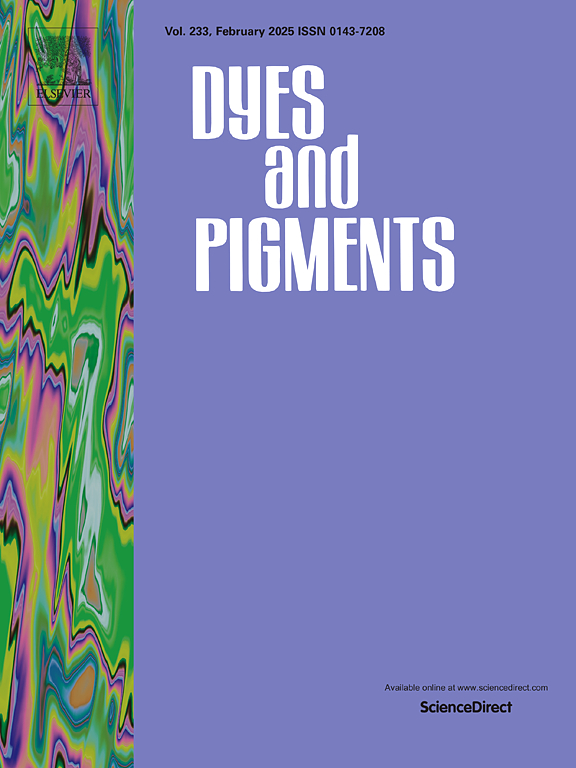Smartphone-assisted ratiometric fluorescence biosensor for mercury ion detection based on fluorescence-enhanced PCN-224
IF 4.1
3区 工程技术
Q2 CHEMISTRY, APPLIED
引用次数: 0
Abstract
Fluorescence-enhanced PCN-224 (FE-PCN-224) was prepared by modifying porphyrin MOF PCN-224 by 1 M Tris-HCl. We found that FE-PCN-224 was able to significantly enhance the fluorescence intensity of 6-FAM-labelled aptamer (FAM-Apt) in pure water, while its own fluorescence intensity was not disturbed. Based on the above, a ratiometric fluorescence biosensing platform was constructed relying on the specific recognition of Hg2+ by T (thymine)-rich aptamers and the PET effect between T-Hg2+-T and FAM. The emission of FE-PCN-224 was used as the reference signal, and the emission of FAM-Apt was used as the sensitive response signal for detecting Hg2+. Hence, the concentration gradient of Hg2+ could be accurately identified by the difference of the ratiometric signals F518/F650. The sensing system has good reliability and high stability. With the support of ImageJ software and mobile phone colour analysis software, convenient quantitative detection was realized through RGB channel analysis of real colour images. Meanwhile the prepared fluorescent colourimetric card can be applied to achieve semi-quantitative detection by the naked eye. The developed convenient biosensor provides a potential route for rapid detection of mercury ion contamination.
基于荧光增强PCN-224的智能手机辅助比例荧光生物传感器汞离子检测
用1 M三羧酸对卟啉MOF PCN-224进行修饰,制备了荧光增强PCN-224 (FE-PCN-224)。我们发现FE-PCN-224能够显著增强6- fam标记的适体(FAM-Apt)在纯水中的荧光强度,而其自身的荧光强度不受干扰。在此基础上,利用富T(胸腺嘧啶)适配体对Hg2+的特异性识别以及T-Hg2+-T与FAM之间的PET效应,构建了比例荧光生物传感平台。以FE-PCN-224的发射作为参考信号,FAM-Apt的发射作为检测Hg2+的敏感响应信号。因此,可以通过比值信号F518/F650的差值准确地识别Hg2+的浓度梯度。该传感系统可靠性好,稳定性高。在ImageJ软件和手机色彩分析软件的支持下,通过对真实彩色图像的RGB通道分析,实现便捷的定量检测。同时所制备的荧光比色卡可实现肉眼半定量检测。该传感器为汞离子污染的快速检测提供了一条新的途径。
本文章由计算机程序翻译,如有差异,请以英文原文为准。
求助全文
约1分钟内获得全文
求助全文
来源期刊

Dyes and Pigments
工程技术-材料科学:纺织
CiteScore
8.20
自引率
13.30%
发文量
933
审稿时长
33 days
期刊介绍:
Dyes and Pigments covers the scientific and technical aspects of the chemistry and physics of dyes, pigments and their intermediates. Emphasis is placed on the properties of the colouring matters themselves rather than on their applications or the system in which they may be applied.
Thus the journal accepts research and review papers on the synthesis of dyes, pigments and intermediates, their physical or chemical properties, e.g. spectroscopic, surface, solution or solid state characteristics, the physical aspects of their preparation, e.g. precipitation, nucleation and growth, crystal formation, liquid crystalline characteristics, their photochemical, ecological or biological properties and the relationship between colour and chemical constitution. However, papers are considered which deal with the more fundamental aspects of colourant application and of the interactions of colourants with substrates or media.
The journal will interest a wide variety of workers in a range of disciplines whose work involves dyes, pigments and their intermediates, and provides a platform for investigators with common interests but diverse fields of activity such as cosmetics, reprographics, dye and pigment synthesis, medical research, polymers, etc.
 求助内容:
求助内容: 应助结果提醒方式:
应助结果提醒方式:


